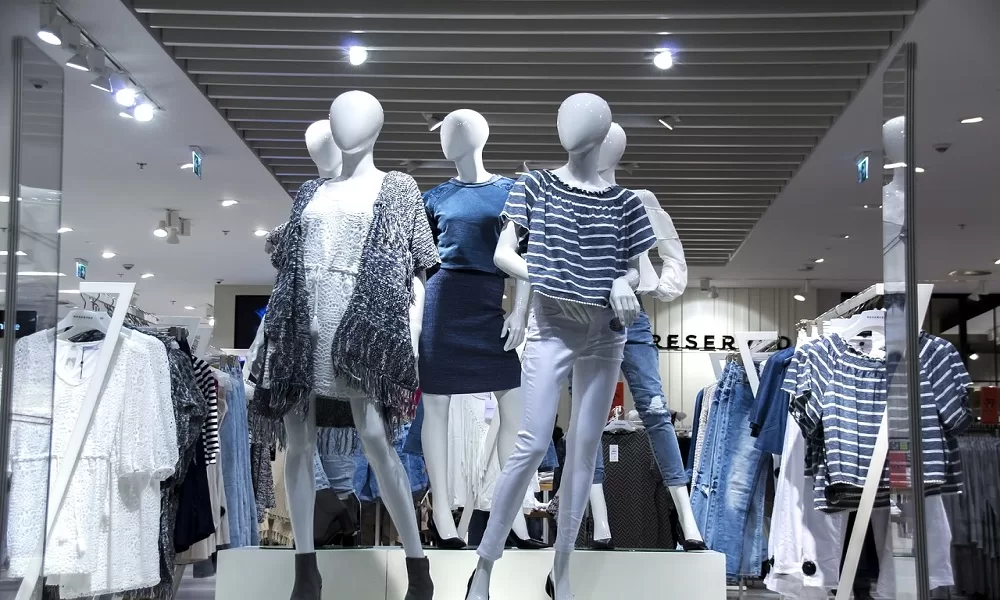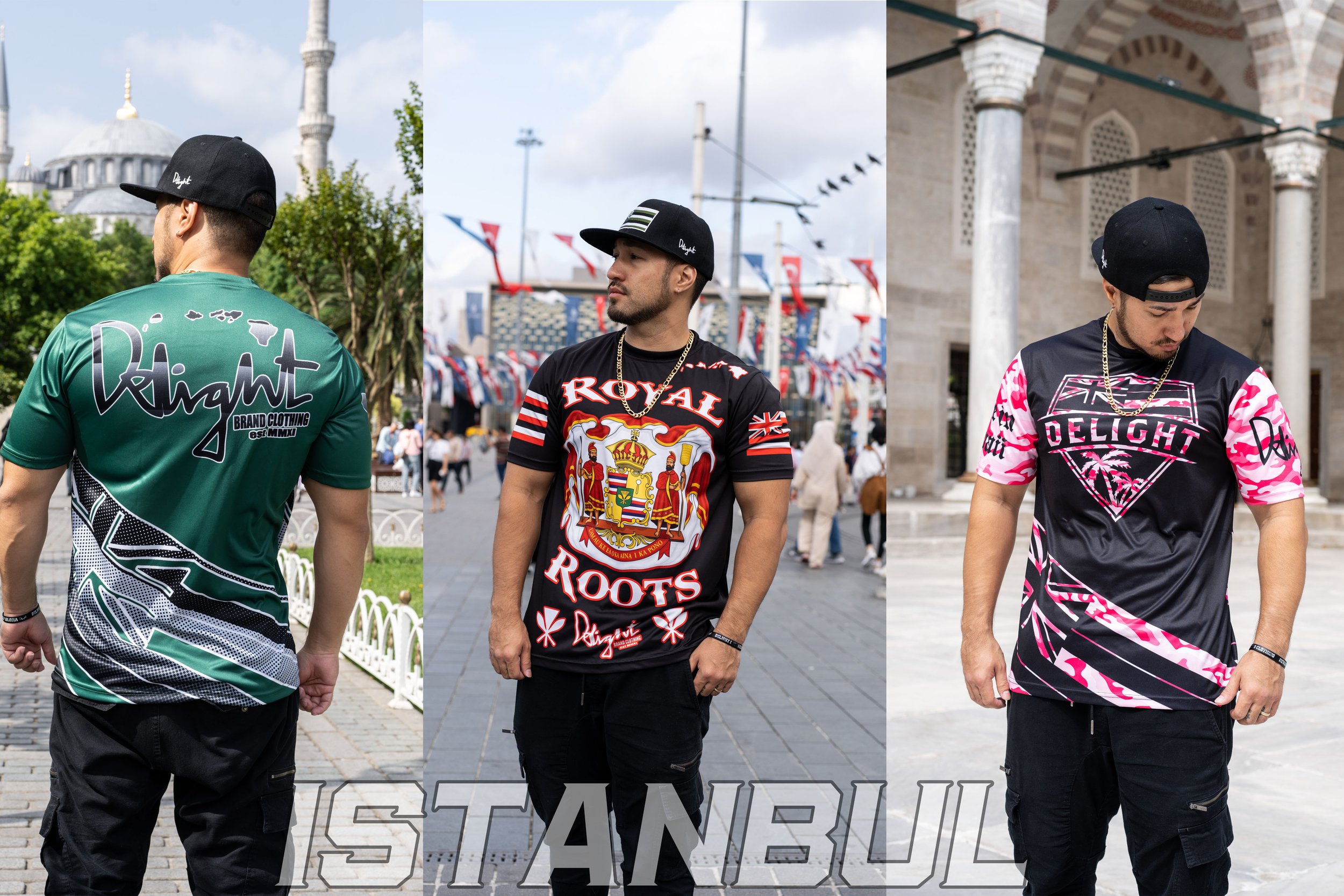How Sustainable Fabric Trends Are Shaping Branded Clothing Collections
How Sustainable Fabric Trends Are Shaping Branded Clothing Collections
Blog Article
Recognizing Garments: The Relevance of Fabric Options in Your Closet
The option of textile in apparel plays a critical duty in both aesthetic appeals and functionality. Various materials use varying degrees of breathability, toughness, and convenience, straight influencing the wearer's experience. Recognizing these nuances can boost one's wardrobe substantially. Yet, many neglect how these options can influence not simply personal style, but also sustainability. What material decisions could redefine your wardrobe and align it with both style and responsibility?
The Duty of Textile in Style and Performance

Typical Fabric Types and Their Qualities
When picking garments, recognizing the qualities of common material kinds is crucial for making educated choices. Cotton, a widely-used natural fiber, is recognized for its breathability, flexibility, and gentleness, making it appropriate for laid-back wear and everyday garments. Bed linen, one more natural choice, flaunts outstanding moisture-wicking residential properties and an unique structure, perfect for cozy climates.Wool, commonly preferred for its warmth and durability, varies in excellence; merino wool is soft against the skin, while coarser types are made use of for outerwear. Synthetic fabrics like polyester and nylon use sturdiness and resistance to wrinkles, making them preferred for activewear and traveling garments. Ultimately, blends, which combine artificial and all-natural fibers, can boost capability while keeping comfort. By acknowledging these fabric attributes, individuals can select clothing that straightens with their lifestyle and aesthetic choices.
Breathability and Convenience: Choosing the Right Fabrics for Various Climates
Selecting the best materials for various environments can significantly enhance convenience and general wearability. Breathable products are vital in hot environments, as they enable air flow and dampness evaporation. Fabrics such as cotton, bed linen, and moisture-wicking synthetics effectively attract sweat away from the body, maintaining the wearer cool and completely dry. Alternatively, in cooler environments, thicker fabrics like woollen or fleece give insulation while maintaining breathability, making sure heat without overheating.Additionally, the option of textile weight plays a crucial function; light-weight materials are more suitable for summer, whereas much heavier options are matched for wintertime wear. Recognizing the special properties of each material allows people to clothe properly for differing climate condition. Ultimately, choosing comfortable and breathable textiles customized to particular environments can considerably boost everyday convenience and boost the general experience of putting on garments.
Sturdiness and Treatment: Exactly How Fabric Impacts Durability of Your Wardrobe
Picking the right products can significantly affect the resilience and treatment needs of a wardrobe. Fabrics such as cotton and polyester are known for their resilience and convenience of maintenance, making them ideal for everyday wear. In comparison, fragile materials like silk and shoelace need even more mindful handling and specialized cleansing methods, which can enhance the time and effort needed for care. Branded Clothing.Durability is additionally affected by the material's weave and surface; firmly woven textiles tend to stand up to wear and tear much better than freely woven alternatives. In addition, artificial blends commonly give enhanced resilience, combining the very best high qualities of numerous fibers.Understanding the treatment instructions for each textile is vital, as improper cleaning or drying out can lead to premature wear. Eventually, selecting resilient products can bring about a longer-lasting closet, decreasing the regularity of replacements and adding to a much more sustainable fashion selection
The Impact of Textile on Fit and Shape

Sustainable Material Options: Making Eco-Friendly Choices
The effect of fabric prolongs beyond fit and shape to incorporate ecological elements, triggering a growing interest in lasting material options. Environment-friendly fabrics, such as organic cotton, hemp, and Tencel, are acquiring traction amongst customers who focus on sustainability in their wardrobes. These products are usually generated with fewer chemicals navigate to this website and water, decreasing their eco-friendly footprint.Additionally, recycled materials, made from post-consumer waste, offer a cutting-edge option to the textile market's pollution trouble. Brands progressively embrace transparency in their sourcing approaches, permitting consumers to make educated decisions regarding their purchases.Choosing lasting materials not just sustains moral practices yet additionally urges the apparel industry to embrace more responsible manufacturing methods. As recognition of ecological issues climbs, people are advised to assess the long-term impact of their material choices, cultivating a movement in the direction of a more lasting and ecologically conscious method to fashion.
Boosting Style: Exactly How Textile Can Transform an Attire
While many might concentrate on color and cut when selecting a clothing, the choice of material plays a necessary duty in raising design and boosting total appearance. Various materials share distinctive moods and messages; for example, silk exudes high-end and class, while denim supplies a casual, unwinded vibe. The appearance and drape of a material can significantly change the silhouette, with structured fabrics supplying a refined appearance and softer ones creating a much more fluid, relaxed aesthetic.Moreover, the weight of the textile affects wearability across periods. Light-weight materials like linen and cotton are ideal for summer, while heavier products such as woollen and velour provide heat and style in cooler months. Recognizing textile residential or commercial properties, such as breathability and stretch, likewise encourages people to make educated choices that enhance comfort without endangering style. Ultimately, the right fabric can transform an outfit from ordinary to extraordinary, making it an essential factor to consider in any type of closet.
Often Asked Questions
How Do I Determine the Textile Content of My Clothing?
To identify material material, one can analyze treatment tags, conduct Bonuses melt examinations for fiber identification, or speak with material swatches. These methods help distinguish materials, making sure notified options for apparel treatment and maintenance in everyday wear.
Can Material Option Affect My State Of Mind or Self-confidence?
Fabric selection can considerably affect an individual's mood and confidence. Branded Clothing. Specific products may stimulate sensations of comfort or elegance, while others can feel unflattering or restrictive, ultimately influencing self-perception and psychological well-being throughout the day
What Fabrics Are Finest for Sensitive Skin?
For people with sensitive skin, all-natural materials like linen, cotton, and bamboo are usually suggested. These products are breathable, hypoallergenic, and much less likely to trigger irritability, making them appropriate options for comfort and skin wellness.
How Do I Properly Laundry and Look After Various Fabrics?
To properly care and clean for various textiles, one must consider each material's details needs, including temperature settings, cleaning agents, and drying out approaches, ensuring long life and preserving the fabric's initial qualities for optimal use.
Are There Particular Fabrics for Athletic or Efficiency Put On?
Sports or efficiency wear often utilizes textiles such as polyester, spandex, and nylon. These materials are created for moisture-wicking, breathability, and flexibility, boosting motion and convenience throughout exercises while providing longevity and assistance. On the other hand, in cooler climates, thicker textiles like woollen or fleece offer insulation while maintaining breathability, making sure heat without overheating.Additionally, the option of fabric weight plays a crucial function; lightweight materials are more suitable for summer, whereas larger alternatives are matched for wintertime wear. In contrast, fragile products like silk and shoelace require more cautious handling and specialized cleaning methods, which can boost the time and effort required for care.Durability is additionally influenced by the fabric's weave and coating; tightly woven textiles tend to withstand wear and tear far better than loosely woven choices. In contrast, rigid materials can limit activity however give a traditional, polished look.Moreover, the density and appearance of the material can influence the visual perception of body form. The impact of material extends beyond fit and shape to encompass ecological factors, motivating an expanding interest in lasting fabric selections. The structure and drape of a fabric can significantly alter the silhouette, with organized textiles providing a sleek look and softer ones developing a more fluid, unwinded aesthetic.Moreover, the weight of the textile influences wearability throughout periods.
Report this page